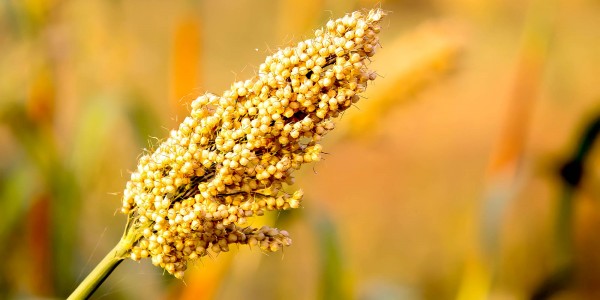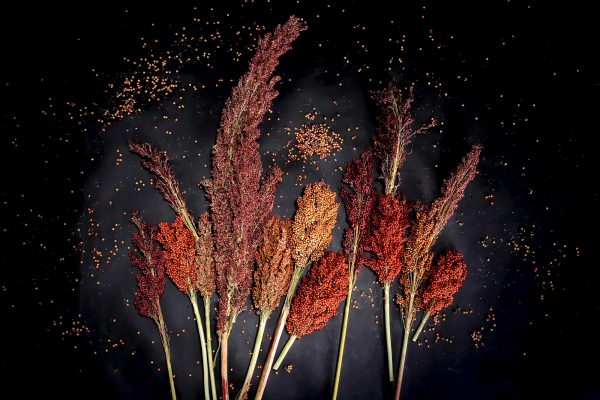
How the Checkoff Works
Act And Order
Sorghum Promotion and Research Program
The Sorghum Promotion, Research and Information Program, commonly known as the United Sorghum Checkoff Program, was established under the Commodity Promotion, Research and Information Act of 1996 (Act). The Act authorizes generic promotion, research and information orders aimed at advancing the demand for agricultural commodities to benefit U.S. producers and consumers. On May 6, 2008, the Agricultural Marketing Service published a final Sorghum Promotion, Research and Information Order after public notice and comment. The Order became effective May 7, 2008. The collection of assessments began on July 1, 2008.
Major Provisions
The program is funded by an assessment of 0.6% of the net market value of grain sorghum and 0.35% of the net market value of sorghum forage, silage, hay, haylage and billets. All producers marketing sorghum in any form must pay the assessment. First purchasers of grain and forage sorghum collect and remit assessments. Imports of sorghum are also assessed.
The program is designed to increase profitability for U.S. sorghum producers. Currently, the board sees productivity, demand and value enhancements as the keys to increasing producer profitability.
Organizational Structure
The Sorghum Promotion, Research and Information Board, also known as the Sorghum Checkoff board of directors, is composed of 13 sorghum producers. Membership includes five seats for the largest production state, three seats for the second largest and one seat for the third-largest state. The board also consists of four at-large national positions. No state is allowed more than six seats. Read more about how to become a board director.
Nine state-level checkoff programs currently exist for sorghum. The Order indicates that between 15-25% of each state’s total assessments collected annually are to be returned to qualified state programs for promotion and research activities. These qualified state programs are certified by the Secretary of Agriculture.
Production
According to USDA data, the top five grain sorghum-producing states account for 89% of total U.S. acres planted. The total U.S. production of grain sorghum in 2015 was 597 million bushels. The top sorghum-producing states are Kansas, Texas, Arkansas, Oklahoma and Colorado.
Compliance
Collection
This form is to be completed and funds remitted monthly to the Sorghum Checkoff by first handlers. A first handler is the first person who buys or takes possession of more than 1,000 bushels of grain sorghum or 5,000 tons of sorghum forage, sorghum hay, sorghum haylage, sorghum billets or sorghum silage from producers in a calendar marketing year.
Sorghum Checkoff Collection Form – PDF
Exemption
In order to be exempt, one must meet the following criteria: Operate under an approved organic system plan authorized under the USDA-AMS organic regulations (7 CFR Part 205) and maintain a valid organic certificate issued by an AMS accredited certifying agent. Produces/handles/imports/manufactures/feeds/exports/processes products eligible to be labeled “organic” or “100% organic” under the USDA organic regulations. And, is subject to assessments under the research and promotion program for which this exemption is requested.
Travel
The Sorghum Checkoff travel policy applies to all staff, board members, committee members and others traveling on behalf of the checkoff. Review the policy if applicable and contact the Sorghum Checkoff office with any questions.
All staff and board members are required to complete a preapproval form before checkoff-funded travel. Complete this form and submit it to the Sorghum Checkoff office.
All staff, board and outside committee members are required to complete a form in order to be reimbursed for travel expenses. Complete this form and mail it and any receipts for claimed expenses to the Sorghum Checkoff office at the address listed below or email to amanda@sorghumcheckoff.com.
Travel Expense Reimbursement Form – Excel Spreadsheet
Please send correspondence and collections to:
United Sorghum Checkoff Program
4201 N. Interstate 27
Lubbock, TX 79403
Phone: 877-643-8727
USDA AMS Guidelines
Congress delegated to the Department of Agriculture (USDA) the responsibility for implementation and oversight of commodity promotion, research and consumer information programs established under freestanding legislation, commonly known as checkoff programs. In 1996, the Commodity Promotion, Research, and Information Act, commonly known as the “Generic Act,” was enacted to allow commodity groups to create programs for their commodities under a generic statute. Prior to the Generic Act, many of today’s programs overseen by USDA’s Agricultural Marketing Service (AMS) were established under commodity-specific legislation (see Appendix 1). The Secretary has delegated all functions to AMS for these programs except those delegated to USDA’s Foreign Agricultural Service (FAS), which has been given the authority to oversee international marketing activities (Federal Register Vol. 62 No. 144).
Guidelines for AMS Oversight of Commodity Research and Promotion Programs

Grain & Forage Assessments
When the Sorghum Checkoff was established in 2008, the board of directors made the decision to base the assessment on a percentage of the net price. Therefore, when prices are low, the checkoff is lower, and when prices are high, the checkoff is higher. The assessment of grain sorghum comes to just more than one-half of a penny per dollar paid for a load of grain.
Who collects the Sorghum Checkoff assessment?
Sorghum Checkoff assessment dollars are collected by the first purchaser to which a producer sells grain. This may be the elevator, ethanol plant or livestock operation. On forage sorghum, collection only occurs on forages sold. For example, a producer who sells forage sorghum to a neighboring dairy will pay the assessment. However, dairymen who grow and utilize their own sorghum silage or hay will not pay an assessment.
How can I calculate my assessment?
Grain assessment = Net Market Value x .006
Forage assessment = Net Market Value X .0035
What is the “Net Market Value” of my sorghum?
Net market value is the value found by multiplying the new market price by the appropriate quantity of the volumetric units, or the minimum value in a production contract received by a producer for sorghum. This is calculated after adjustment for any premiums or discounts.
How do I know I have paid the assessment?
First purchasers are required to provide a receipt indicating payment of the assessment. This receipt should be any document issued by the first purchaser that contains the information documenting evidence of payment.
What is the difference between grain sorghum checkoff rates and forage sorghum checkoff rates?
Grain sorghum is calculated at 0.6% of the net market price per bushel, and forage sorghum is calculated at 0.35% of the net market price per bushel.
Certified Producer Organizations And Qualified State Organizations
- Arkansas Corn and Grain Sorghum Board*†
- Colorado Sorghum Producers Association*†
- Kansas Farm Bureau*
- Kansas Grain Sorghum Commission*†
- Kansas Grain Sorghum Producers Assoc.*
- Kentucky Small Grain Growers Assoc.†
- Louisiana Cotton & Grain Association*
- Louisiana Soybean and Grain Research and Promotion Board†
- National Black Growers Council*
- National Sorghum Producers*
- Nebraska Grain Sorghum Association*
- Nebraska Grain Sorghum Board*†
- Nebraska Farm Bureau*
- New Mexico Sorghum Association*†
- Oklahoma Sorghum Commission*†
- Oklahoma Sorghum Association*
- South Dakota Corn Growers Association*
- South Dakota Farm Bureau*
- South Dakota Farmers Union*
- Texas Farm Bureau*
- Texas Grain Sorghum Association*
- Texas Grain Sorghum Board*†
- US Grains Council*
* Certified Producer Organizations
† Qualified State Organizations

